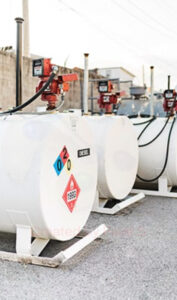
The best way to ensure your tank doesn’t run out of oil is to use a tank monitoring system.
People who manage oil and gas have demanding jobs. Overlooking these tanks means guaranteeing the long-term safety and dependability of these structures. That means ensuring that tanks don’t have adverse effects regarding spills, leaks, or other accidents. Monitoring your tank system is vital whether you run a small operation or manage a large company’s tank farm.
The main challenge of this job is deciphering when a tank is about to run out of oil. It often seems that there isn’t a straightforward solution to provide an accurate warning each time. Instead, this goal utilizes different tools. Allow our team at Howard Energy Inc. to provide you with the ultimate tank.
Determining Tank Levels Vs. Content is Less Daunting
A CCTV camera system or tank gauging equipment can help you see how much oil your tank is storing. There isn’t an exact or perfect method on how to do this. It’s simpler to determine tank levels versus tank contents. Some tank monitoring systems depend on electronic signals, while others use visual information. Depending on which method you use, you will have more or less success with this.
Determining tank levels is challenging because it is hard to gauge:
- The fill level (how much oil is in the tank at any given time)
- The inventory (the amount of oil stored in the tank)
The best way to ensure your tank doesn’t run out of oil is to use a tank monitoring system to detect tank levels and contents. Even more important is ensuring you don’t confuse the two because you’ll have inaccurate information. Additionally, you want to ensure that the tank level readings are as exact as possible. There is a direct relationship between tank levels and tank inventory.
Collect Data Consistently
A tank monitoring system is only helpful if you use it consistently. It’s best to take tank readings twice daily if your goal is to have an optimal system.
It’s best practice to take these measurements in the morning when the tanks are full and before anyone removes or adds any oil. As a result, you can determine how much oil will remain by a particular time. Thus, you’ll have accurate inventory information, giving you more precise information on the rate of use.
It’s best to use wireless tank gauges to get accurate readings. Wireless tank gauges attach directly to the bottom of your tanks, enabling you to obtain level and inventory readings quickly and accurately with ease.
Use Multiple Tank Monitoring Systems
Even if the few monitoring systems you use are the same system types, they detect different issues. One might notice a ventilation issue, while the other might register a temperature control problem, oil spill, or leak.
Ensure You Have a Knowledgable Staff
It’s best practice never to set a system and ignore it. Instead, it’s best to have a team of employees who can take care of this. These employees can ensure there are accurately working tank monitoring systems and that there is a review of the collected data consistently.
Once all training materials are complete, have your staff put them into action with hands-on training. The training process should be thorough and time-consuming, and your employees should know how each system functions. They should also know what data needs to be on their radars.
The point is that your team should feel comfortable retaining and applying new information. One way to initiate this is by assigning one or two employees responsible for all tanks, inspections, tests, and monitoring throughout your company.
Contact Howard Energy Inc today if you need a tank monitoring system that provides frequent readings and low-level alerts.
